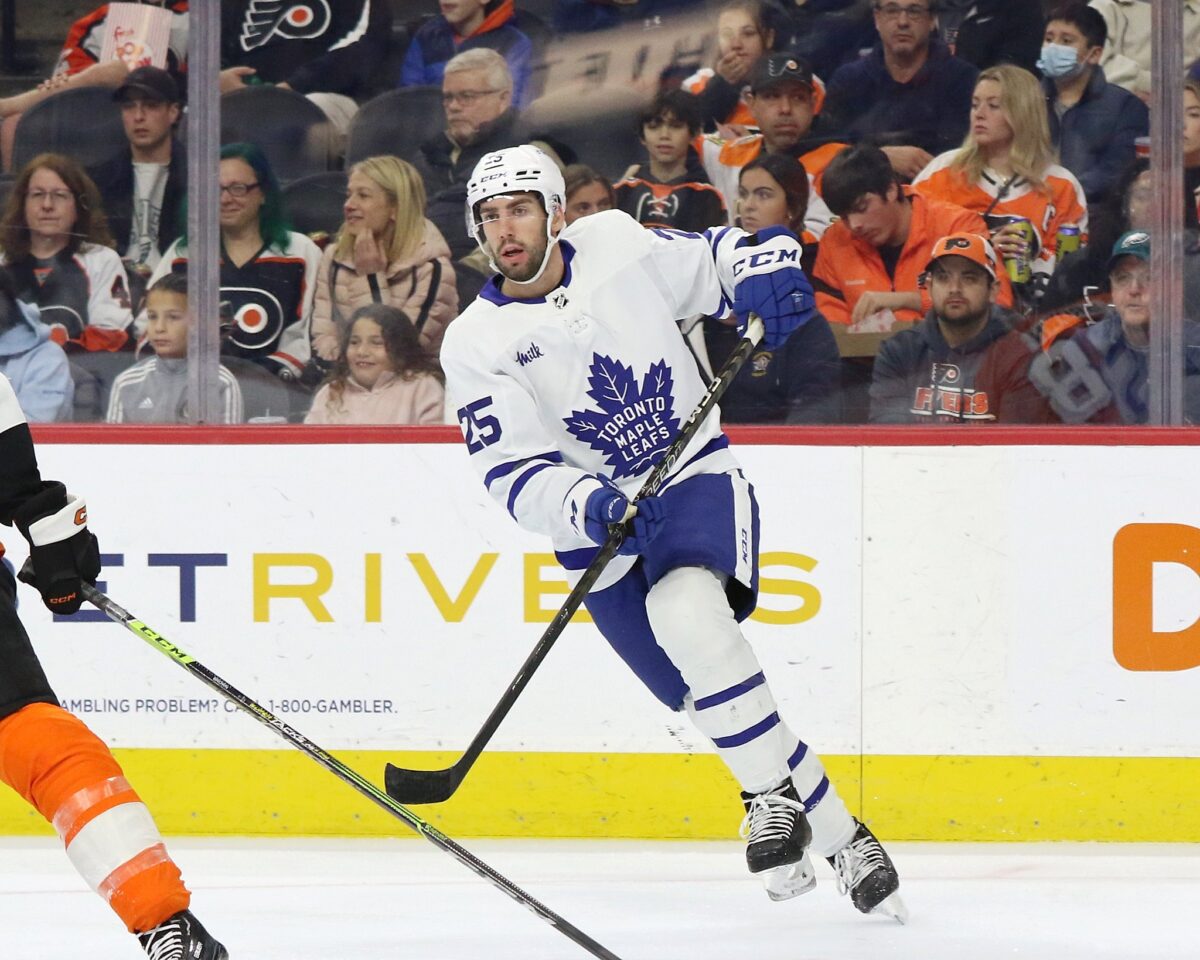Fifty-four games into the season, the Toronto Maple Leafs have iced a total of 11 defensemen, six of whom have played at least half of the team’s games. Considering that once-mainstay blueliner John Klingberg played just 14 games before going down with a season-ending injury, one would assume that the Maple Leafs have given looks to several defensemen before settling on the six that have played at least half the season. One of those defensemen is Conor Timmins, a second-year Maple Leaf who hasn’t quite established himself as NHL-ready, according to the front office.
That couldn’t be more wrong, though, as Timmins has been excellent when called upon for just about the entirety of his six-year career — though he’s only played a total of 82 games in those six years — especially in his last two seasons in Toronto. With a ton of injuries on the back end throughout the season, it certainly makes you wonder why he hasn’t seen much time on the Maple Leafs’ bottom pairing this year.
Underlying Metrics Prove His Worth
Outside of one season — and one in which he played just two games — Timmins’ expected goals share (xGF%) has been astonishingly high, in particular with the Maple Leafs. It’s hard to judge his play and his metrics when playing so few games. But in the 31 games he played with the Colorado Avalanche back in 2020-21, which is the most amount of games he’s played in a single season this far into his career, Timmins posted an xGF% of 57.05 percent, meaning that the Avalanche controlled almost 60 percent of the expected goals when he was on the ice. His high-danger chance percentage (HDCF%) was an equally amazing 59.70 percent.

In his tenure with the Maple Leafs, the story has been much of the same: extremely impressive underlying statistics but not a whole lot of playing time. Last season, Timmins’ xGF% was 56.60 percent, and his HDCF% was 59.31 percent. His expected goals against per 60 (xGF/60) was a team-low 2.06, which indicates his absolutely dominant defensive play in just 16 games last season, and he had the fourth-highest HDCF/60 among defensemen with at least 10 games played.
Related: 3 Trade Destinations for Maple Leafs’ Calle Jarnkrok
This season, 25-year-old Timmins has been even better. He’s sporting an xGF% of 59.48 percent, which is not only the highest mark of his career but is the highest among all Maple Leafs skaters with at least 10 games played. His expected goals for per 60 (xGF/60) of 3.48 is miles above any other defenseman on the team — the second highest rate belongs to Mark Giordano, who is running with an xGF/60 of 2.82. Timmins’ xGA/60 is almost equally as impressive, solely trailing William Lagesson and Simon Benoit. His HDCF% of 63.00 percent and HDCF/60 of 17.39 are also significantly better than any other defenseman.
Timmins Should Be a Roster Mainstay
In addition to his underlying metrics, the counting stats have been pretty solid for Timmins as well. In 41 games with Toronto, he’s put up 20 points while averaging just over 15:30 per game. He fits the bill of that gritty skill that the Maple Leafs have been infatuated with for years, with 35 blocks and 41 hits so far in his tenure with them. He hasn’t seen any AHL time this year — he must go through waivers, and GM Brad Treliving is correct in assuming he’d be picked up by another team — so he’s just been riding the pine for most of the year.
But once he returns from mononucleosis, which has had him out indefinitely since Feb. 12, it’s about time he became a permanent contributor to the defense corps, especially considering the amount of success he’s shown in the smaller sample size than he deserves in the big leagues.
